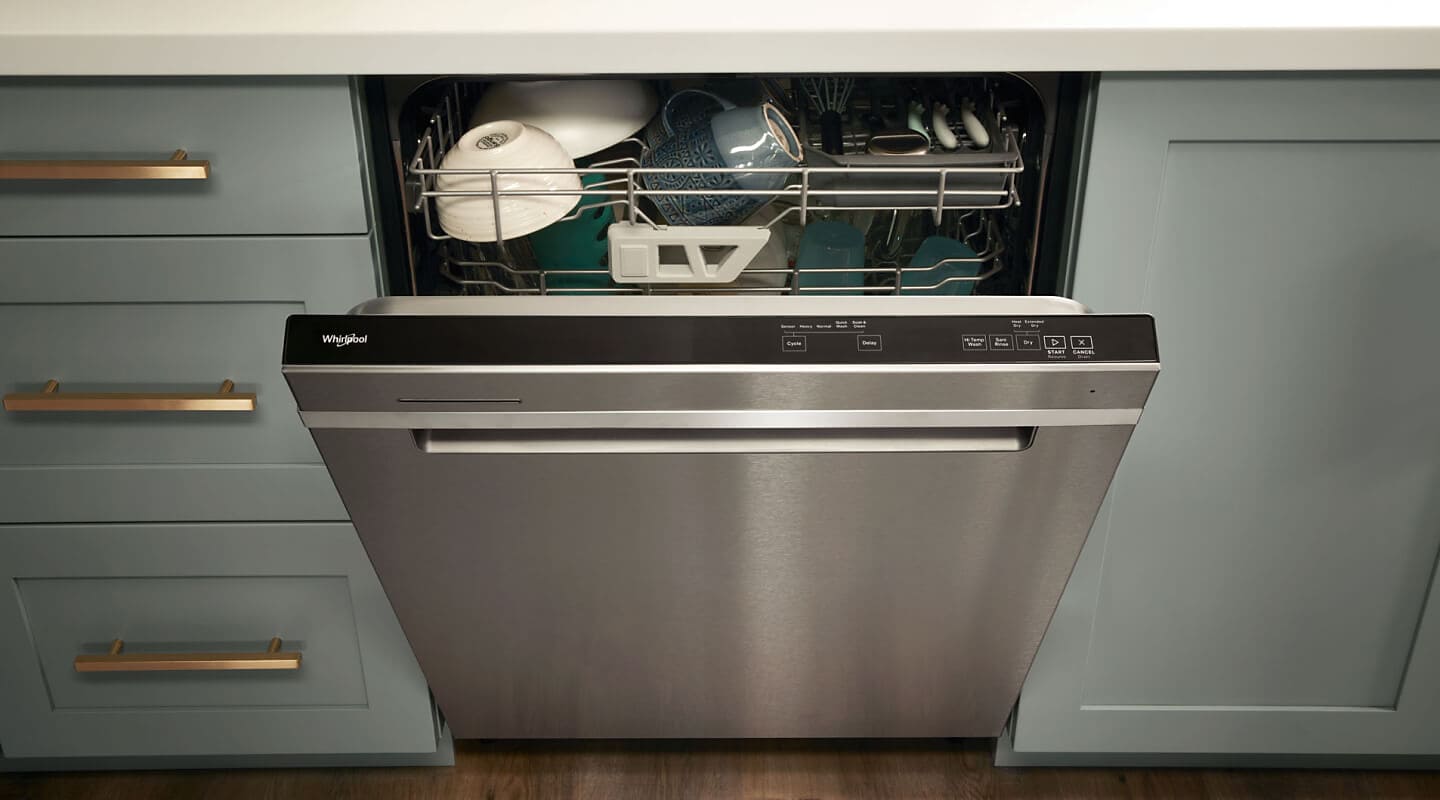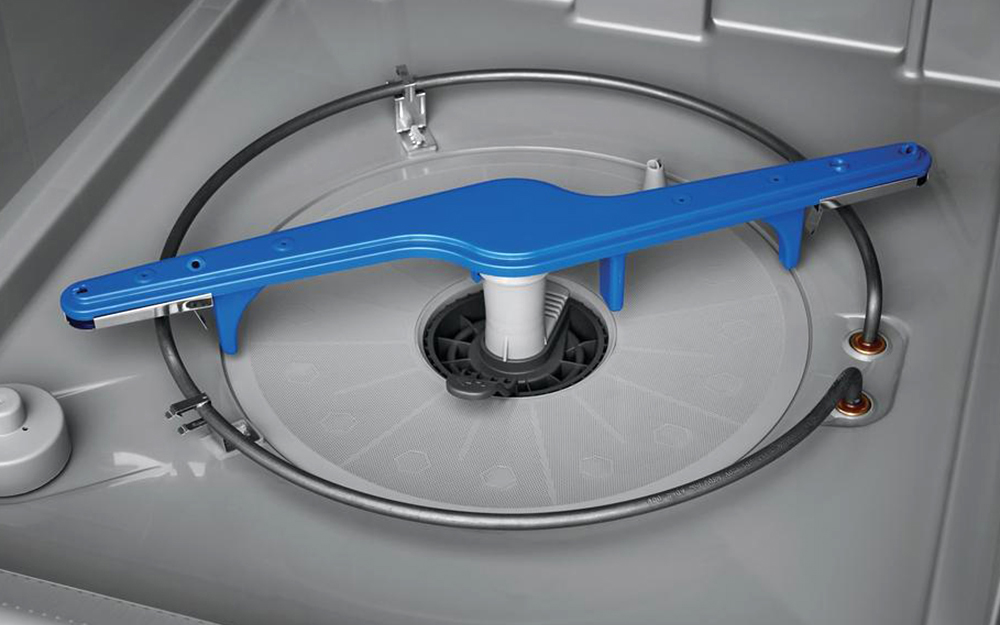Is your dishwasher leaving your dishes wet and frustrating you every time? You’re not alone.
When your dishwasher isn’t drying dishes properly, it can feel like all that effort was for nothing. But don’t worry—there are simple reasons behind this common problem, and even easier solutions you can try right now. Keep reading to discover why your dishwasher isn’t drying your dishes and how you can fix it fast, so you can enjoy spotless, dry dishes every time.

Credit: www.whirlpool.com
Common Reasons Dishes Stay Wet
Many people face the problem of dishes not drying fully after a dishwasher cycle. Wet dishes mean extra work and less hygiene. Several common issues cause dishes to stay wet. Knowing these reasons helps fix the problem quickly.
Clogged Or Dirty Filter
A clogged filter stops water from draining well. Dirty filters block water flow and trap food bits. This makes drying less effective. Regular cleaning of the filter improves drying performance.
Malfunctioning Heating Element
The heating element warms the air inside the dishwasher. If it breaks or stops working, dishes stay wet. No heat means no steam to dry dishes properly. Testing and replacing the heating element solves this issue.
Improper Loading Techniques
Loading dishes incorrectly blocks air and water flow. Overcrowded racks trap moisture on plates and cups. Placing items too close or upside down causes water to pool. Proper loading helps air circulate and speeds drying.
Rinse Aid Issues
Rinse aid helps water slide off dishes faster. Without enough rinse aid, water beads form on surfaces. These beads leave spots and wet dishes. Filling the rinse aid dispenser regularly ensures better drying results.
Vent Or Fan Problems
The vent and fan release steam during drying. If they fail, moisture stays inside the dishwasher. A broken vent or fan reduces air flow and drying power. Checking and fixing vent or fan issues restores drying ability.

Credit: www.youtube.com
Quick Diy Fixes
Dishwashers sometimes leave dishes wet. This problem is common but fixable. Try these quick DIY fixes to get dry dishes again. No need to call a technician right away. These simple steps often solve the issue fast.
Clean The Filter Thoroughly
The filter traps food particles. A dirty filter blocks water flow and heat. Remove the filter from the dishwasher bottom. Rinse it under running water. Use a soft brush to clean stubborn debris. Clean the filter regularly for best drying results.
Check And Replace Heating Element
The heating element helps dry dishes by warming the air. If it breaks, dishes stay wet. Look for visible damage or rust on the element. Use a multimeter to test for electrical continuity. Replace the heating element if it is faulty. This fix improves drying performance significantly.
Adjust Loading For Better Airflow
Overcrowded racks block hot air circulation. Place dishes with space between them. Avoid stacking large items in one spot. Load cups and bowls facing down for proper water drainage. Better airflow helps dishes dry faster and cleaner.
Refill Or Replace Rinse Aid
Rinse aid prevents water spots and aids drying. Check the rinse aid dispenser level. Refill it if low or empty. Use rinse aid regularly for shiny, dry dishes. If the dispenser is broken, replace it to restore function.
Clear The Vent And Fan
The vent and fan release steam during drying. Dirt or food may block these parts. Clean the vent area with a soft cloth. Remove any debris inside the vent opening. Make sure the fan spins freely. This keeps steam moving out, helping dishes dry well.
Preventive Tips For Better Drying
Better drying starts with simple habits. Small changes improve how your dishwasher dries dishes. Follow easy tips to avoid wet dishes after a cycle. These steps help save time and keep dishes ready to use.
Use The Right Detergent
Choose a detergent made for your dishwasher model. Some detergents help water rinse off better. This stops water spots and helps dishes dry faster. Avoid using too much detergent. Excess soap can leave residue and make drying harder.
Select Optimal Drying Cycle
Pick a drying cycle that fits your needs. Many dishwashers have options like heated dry or air dry. Heated dry uses more energy but dries dishes well. Air dry saves energy but may leave dishes damp. Use heated dry for better results when needed.
Regular Maintenance Schedule
Keep your dishwasher clean and working well. Clean filters and spray arms often. Clogged parts reduce water flow and drying power. Check for buildup or debris inside. Regular care helps the dishwasher dry dishes properly every time.
Avoid Overloading The Dishwasher
Do not pack too many dishes inside. Overloading blocks water and air flow. Plates and cups need space to dry fully. Load dishes with gaps between them. This lets hot air reach all surfaces and dries them better.
When To Call A Professional
Knowing when to call a professional can save time and avoid damage. Some dishwasher problems need expert help. Trying to fix complex issues alone might make them worse. Watch for signs that point to serious problems.
Persistent Heating Issues
Dishwasher not heating up properly for drying? This could mean the heating element is faulty. Replacing the element requires special tools and skills. Persistent heating problems often need a technician’s attention. They can test and fix the element safely.
Electrical Component Failures
Electrical parts like thermostats and control boards affect drying. Faulty components can stop the dishwasher from drying dishes. Handling electrical parts without knowledge is risky. A professional knows how to check and replace these parts. Calling an expert avoids electric shock or more damage.
Complex Venting Problems
Dishwashers use vents to release steam during drying. Blocked or broken vents reduce drying efficiency. Vent repairs often require removing parts inside the dishwasher. Some vents are hard to access and fix. Professionals have tools to solve venting problems properly and safely.

Credit: www.homedepot.com
Frequently Asked Questions
Why Is My Dishwasher Not Drying Dishes Properly?
A common cause is a broken heating element or a blocked vent stopping steam from escaping.
How Can I Fix Dishwasher Drying Problems At Home?
Check and clean the filter, spray arms, and vent. Replace damaged parts if needed.
Does Using Rinse Aid Help Dishwasher Drying?
Yes, rinse aid reduces water spots and helps dishes dry faster and cleaner.
Can Dishwasher Overloading Cause Poor Drying Results?
Yes, overcrowding blocks air flow and water drainage, leading to wet dishes after washing.
Is It Normal For Plastic Dishes To Stay Wet After Drying?
Plastic holds water longer because it doesn’t heat as well as glass or metal.
Conclusion
A dishwasher that does not dry dishes can cause frustration. Small fixes like checking the rinse aid or cleaning filters help a lot. Sometimes, adjusting the drying settings makes a big difference. Regular maintenance keeps your dishwasher working well. Remember, dry dishes mean less hand drying and more convenience.
Take simple steps today to enjoy fully clean and dry dishes tomorrow. Your kitchen routine will feel easier and faster. Don’t let wet dishes slow you down.
